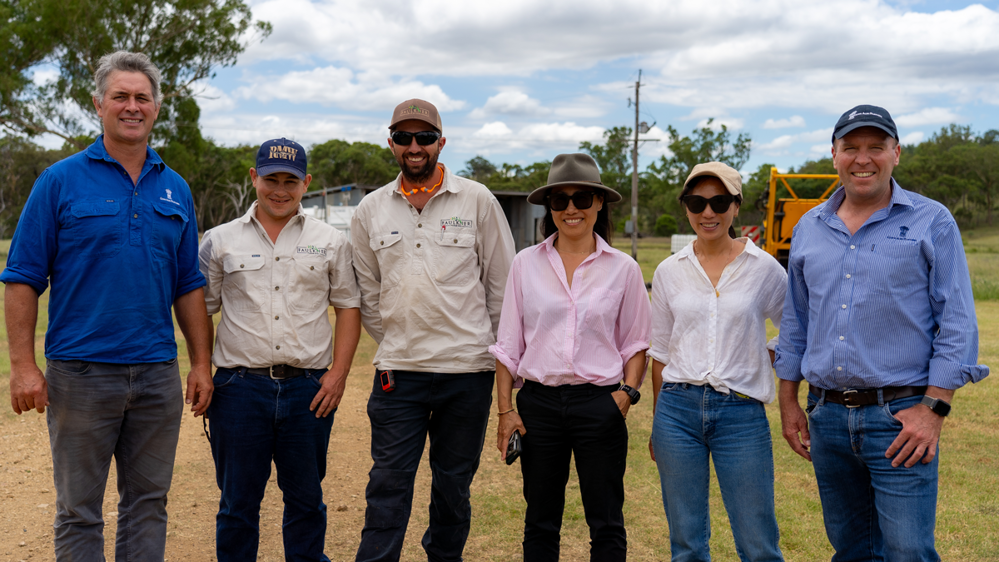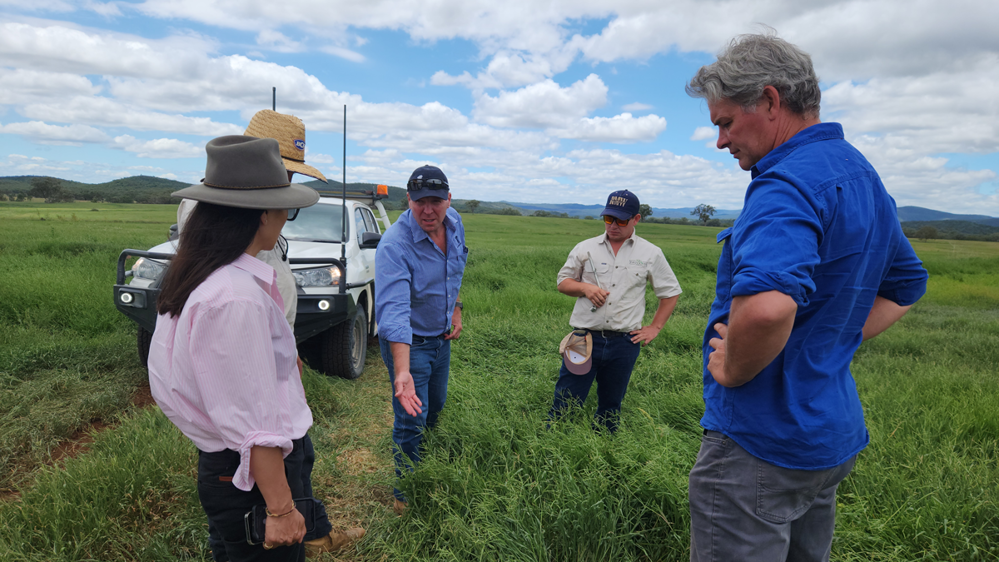
The future of sustainable farming
The Green Files is a unique CEFC series where we talk to the people making a difference in the race to net zero emissions.
Agriculture not only contributes to the Australian economy, it’s a foundational economic building block. Accounting for over 55 per cent of Australia’s land use, the stewardship of the environment in which it operates is critical. Our growing population is demanding more, and increasingly, healthier food, which coupled with the need to address the damaging effects of climate change, means more agricultural businesses are adopting sustainable farming practices. Put simply, we need to produce more with less.
Sustainable farming is all about farming to meet the needs of existing and future generations while ensuring profitability, environmental health, and social and economic equity. This can be achieved through a range of methods, but generally centres around protecting and promoting healthy soil, water, and biodiversity in the farm landscape.
A leader in this adoption is Gunn Agri Partners, an independent Australian farmland manager, managing over $1 billion of assets and commitments across more than 1.1 million hectares of agricultural land.
The CEFC and La Caisse (formerly CDPQ), one of Canada’s largest Pension funds have recently announced a $250 million landmark, large-scale, diversified agricultural platform to generate high-quality Australian Carbon Credit Units (ACCUs), managed by Gunn Agri Partners.
We came together with a common goal – to invest more capital into agriculture and implement sustainable farming practices to support Australia’s low emissions economy.Bradley WheatonManaging Director, Gunn Agri Partners
Bradley Wheaton and Sean O’Reilly, Managing Directors at Gunn Agri Partners, discuss their approach to sustainable farming and the crucial role of institutional capital in the agriculture sector.

How important is the agricultural sector to Australia’s future?
SO: Agriculture has a huge role to play in Australia’s future. We’re net exporters of food and play an important role in multiple global supply chains – in 2023-24, Australia’s agricultural exports were valued at almost $71.5 billion. We have a massive opportunity to lead the way in sustainable agricultural operations, not only feeding the growing global population, but also ensuring food security in our own backyard, all while creating economic prosperity.
BW: It’s critical, both economically and for the way in which we manage the environment. Agriculture land use accounts for such a large portion of our landscapes. Managing those landscapes more sustainably – through carbon sequestration, emissions reduction and protecting biodiversity – is something that investors and the public are increasingly demanding. We've got a huge responsibility to do this not only for ourselves, but for future generations.
How have you seen the industry change in recent years?
BW: The agriculture industry has been operating for a very long time, and if you look back at the enterprises that survived and thrived, it’s those with sustainable practices at their core. The agriculture sector has always been innovative, but we’re beginning to see more investment into this innovation. This not only improves the efficiency of the crops we produce but helps us to produce these crops more sustainably. We’re also seeing more of a focus on managing natural capital, such as the native vegetation, waterways, and wetlands around our farms.
SO: I've been immersed in the agriculture industry my whole life, and the way I’ve seen the industry change is quite extraordinary. Technology has improved our ability to farm in more profitable and sustainable ways. Digital agriculture, for example, can create satellite imagery of farms that allows us to explore assets at a level of detail we couldn’t have dreamed of 10 years ago. Where knowledge has historically been transferred over decades from one family member or buyer to another, we can now use technology to accelerate that spread of knowledge.
What is Gunn Agri’s approach to sustainability?
BW: Integrating sustainability into farm management is at the core of Gunn Agri’s business. Our approach incorporates sustainability into the design and delivery of our strategies, and we have a mandate to transparently report against targets for our assets. We analyse our assets to understand the best use of the land and how existing agricultural processes can be managed in a more sustainable way. We look for opportunities to use low emissions technologies to cut the carbon footprint of our production. We transition to renewable energy sources, such as solar pumps and remote electricity generation, and we look for opportunities in the very important area of carbon sequestration in regenerated native vegetation and soil.
In addition, we look at ways to enhance environmental and biodiversity outcomes on our assets. For example, in our pastoral business, Cunningham Cattle Co, we worked with the Queensland Government, in collaboration with the Department of Climate Change, Energy, the Environment and Water (DCCEEW), to create Nature Refuges on two properties covering over 280,000 hectares.

How is Gunn Agri supporting more sustainable farming and lowering its emissions on its farms?
SO: We can look at the Wilga Farming platform as an example, which we manage on behalf of our investors, including the CEFC. Our strategy for Wilga Farming is to invest in underperforming farms to lift productivity and optimise land use. We do this by aggregating smaller parcels of land into farms that can be operated more sustainably at scale. When we’re operating at scale, we can afford to invest in the technology that helps us drive down emissions.
An example of this is the way we’ve reduced the emissions embedded in fertiliser use. By measuring the reduction in application rates from the conventional ‘flat rate’ approach across a whole paddock, to the variable rates calibrated to optimise production, we’re seeing direct improvements in the emissions intensity of our production. The result is less fertiliser used for the same amount of grain produced – and we are capturing the data to prove that.
We operate Wilga Farming in varying climate regions across Australia. In other places, you would have to change countries to do this. In Australia, we just change States or regions. And because of our scale, we are able to make the upfront capital and time investment to integrate new technologies cross Wilga and our other investment platforms.
What has the CEFC and La Caisse investment meant for Gunn Agri?
BW: We manage investments for a range of investors, and sustainability is the common theme that drives our focus across each platform and asset. The investment from CEFC and La Caisse has been pioneering in the Australian agriculture sector and has really allowed us to roll out our sustainable farming strategy. We came together with a common goal – to invest more capital into agriculture and implement sustainable farming practices to support Australia’s low emissions economy.
This has enabled us to build our own team to implement carbon and biodiversity projects and to measure, report and act on the sustainability metrics we capture. The asset and natural capital management teams we get to work with have a wealth of expertise in carbon, biodiversity, ecology and information science that is unique in our industry. The investment of CEFC and La Caisse has been the driver of us developing these capabilities – it really is a true partnership.




